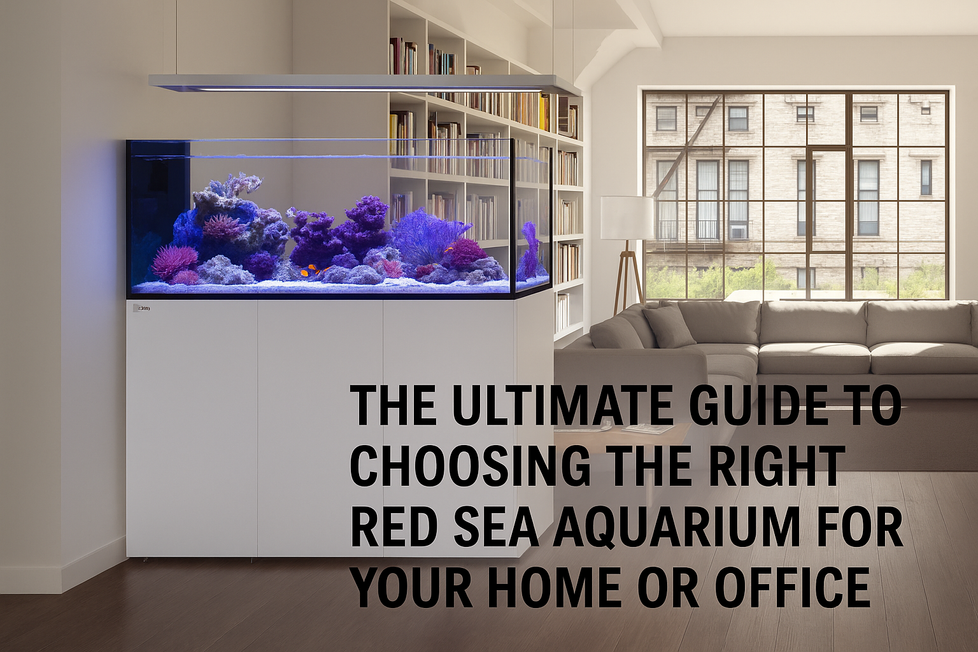Adding live plants to your aquarium is a game-changer. Not only do they make your tank look gorgeous, but they also help create a healthier environment for your fish. If you're thinking about making the switch to live plants or just want to add a few more to your existing setup, you've come to the right place. This relaxed and informal guide will walk you through the steps to add live plants to your aquarium, with some great product recommendations from Charterhouse Aquatics.
Why Add Live Plants to Your Aquarium?
Live plants offer a ton of benefits:
- Oxygenation: They produce oxygen during the day, which benefits your fish.
- Filtration: Plants absorb nitrates, helping to keep your water clean.
- Natural Habitat: They provide shelter and reduce stress for your fish.
- Aesthetic Appeal: Let's face it, a well-planted tank just looks amazing!
Getting Started: What You’ll Need
Before you dive in, here’s a list of things you’ll need to get started:
Substrate
Choosing the right substrate is crucial for plant growth. Plants need nutrients, and a good substrate can provide that.
Recommended Product: Tropica Aquarium Soil
Lighting
Proper lighting is essential for photosynthesis. LED lights are energy-efficient and perfect for growing plants.
Recommended Product: Fluval Plant 3.0
CO2 System
While not all plants require CO2 injection, it can significantly boost growth for more demanding species.
Recommended Product: Tropica CO2 System
Fertilizers
To keep your plants lush and green, you'll need to add fertilizers. Liquid fertilizers are easy to use and effective.
Recommended Product: Tropica Plant Growth Fertilizer
Step-by-Step Guide to Adding Live Plants
Step 1: Choose Your Plants
Start by selecting plants that suit your aquarium's conditions and your level of experience. Some great beginner plants include:
-
Anubias Nana: Low maintenance and can attach to rocks and driftwood.
- Recommended Product: Tropica Anubias Nana
-
Java Fern: Hardy and doesn't need much light.
- Recommended Product: Tropica Java Fern
-
Cryptocoryne Wendtii: Adaptable to various conditions.
- Recommended Product: Tropica Cryptocoryne Wendtii
-
Monte Carlo: Great for creating a carpet effect.
- Recommended Product: Tropica Monte Carlo
Step 2: Prepare Your Substrate
Rinse your substrate to remove any dust. Spread it evenly across the bottom of your tank, creating slopes and contours to add depth.
Step 3: Planting
Use aquascaping tweezers to plant delicate species without damaging them. For plants like Anubias and Java Fern, attach them to rocks or driftwood using fishing line or plant glue.
Recommended Product: Aquascaping Tweezers
Step 4: Add Water Slowly
Fill your tank with water slowly to avoid disturbing your newly planted substrate. You can place a plate or plastic bag over the substrate and pour water onto it to reduce disturbance.
Step 5: Lighting and CO2
Set up your lighting and CO2 system according to the needs of your plants. Ensure your lights are on for 8-10 hours a day.
Step 6: Fertilization
Start adding liquid fertilizer according to the instructions. Regular fertilization will keep your plants healthy and vibrant.
Step 7: Maintenance
- Pruning: Regularly trim your plants to encourage growth and maintain their shape.
- Water Changes: Perform regular water changes to keep your tank clean and provide fresh nutrients.
- Algae Control: Keep an eye on algae growth and control it with algae eaters or by adjusting your light and nutrient levels.
Troubleshooting Common Issues
Yellowing Leaves
If your plant leaves are turning yellow, they might be lacking nutrients. Check your fertilization routine and consider adding root tabs for heavy root feeders.
Melting Plants
Some plants, especially Cryptocoryne, might "melt" when first introduced. This is normal and usually temporary. Ensure stable conditions and the plants should recover.
Algae Growth
Algae can be a common issue in planted tanks. Make sure you're not overfeeding your fish and adjust your lighting schedule if necessary. Introducing algae-eating fish or snails can also help.
Conclusion
Adding live plants to your aquarium can transform it into a vibrant and healthy ecosystem. With the right tools and products from Charterhouse Aquatics, you can create a stunning aquascape that both you and your fish will love. So, get planting and enjoy the beauty and benefits of a planted tank!
Happy planting!


